The
second vehicle of the set is the Standard Motor Company Tilly. I immediately
liked this truck, with its 30’s civilian bonnet. First of all
“Tilly” wasn’t the name of a vehicle but a family
of vehicles. Four different producers made their own Tilly. The Standard
Motor Company was one of them. The Standard Tillies were built in
three series plus an ambulance version and a civilian family saloon
car supplied at the beginning of the war. The type chosen by Airfix
is the 10 cwt DC series, which was allocated only to the Air Ministry.
Some useful photos (then and now) of the DC Tilly can be found here:
http://standard.tillyregister.com/classic.html
The former, narrower 5 cwt BB series was similar.
It can be quickly recognized by the different forward mudguards layout
and the step at the base of the side doors. The later UV series (allocated
also to the Army and the Royal Navy) was quite different, having a
longer wheelbase chassis, vertical windshield, different radiator
mesh, wheels, sides and doors. For the Army Tillies the WD vehicle
class prefix was the letter M (but this is not the case of this kit
model which wasn’t allocated to the Army). For a UV Tilly walkaround
see here: http://www.wheelsofvictory.com/Brit%20index2.html .
About
the DC series production changes, the only evidence I found is about
the lights which became smaller and set farther apart. Sadly I found
only a handful of photos and very little information. What surprised
me was that the DC 10 cwt had independent front suspension with a
transversal leaf spring and not the double longitudinal leaf springs
of the kit (see here: http://www.standardmotorclub.org.uk/page780.html).
Judging on the basis of the drawings in the article, the Airfix DC
12 hp (10 cwt) kit seemed to have, under a DC body, an UV 14 hp chassis
with the DC wheelbase. I looked for photos of the real structure with
no results. I didn’t find a walkaround on the net and only two
DC are still preserved today. At the end I wrote to the Tilly Register
site. Luckily Michael Shackleton kindly sent me three photos which
show the front suspension system. It was effectively completely different!
The differences can be described, concisely, as follows: the front
axle was a rod, shaped as a large opened “omega” attached
to the chassis and which embraced the engine belly. At the endings
of the axle, there were two vertical “V” shaped structures.
At the lower single point of this was a hinged rod, at the upper points
were the hinges of the double endings of the wishbone piece. The opposite
rod end and the single end of the wishbone were hinged to the wheel
hub. The wishbone and the single rod could move up and down for the
suspension of the wheel, with the hub attached to them. Attached to
the centre axle bottom there was the transversal leaf spring which
endings are attached to the wheels hubs.
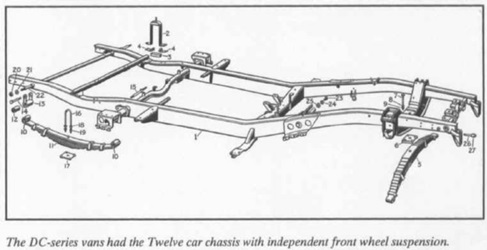
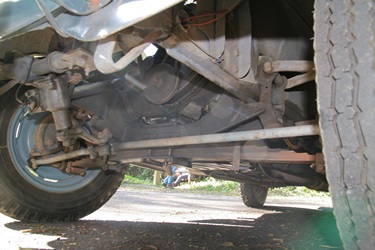 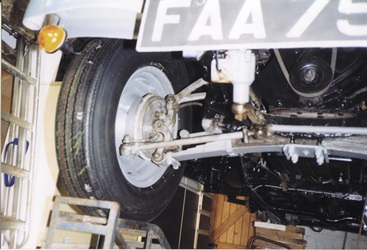
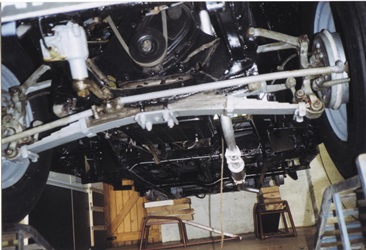
Unfortunately my first Tilly was already made with
the kit chassis, because I found the discrepancy after having glued
it. But I had a second kit…
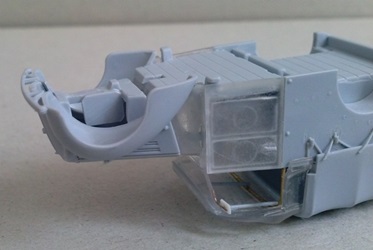 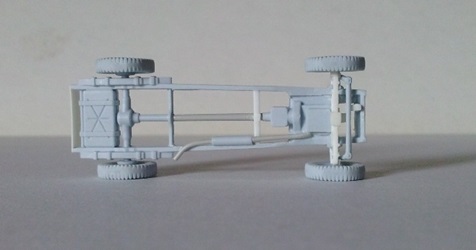
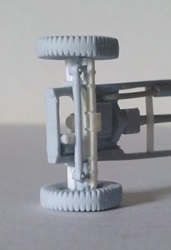 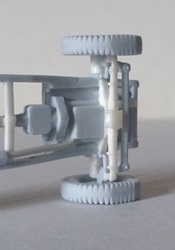 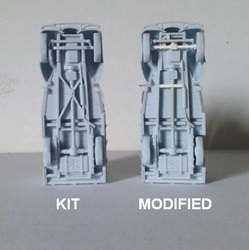
Chassis modification
After having taken the dimension to maintain the same
ground clearance, I removed the axle with the two leaf springs from
the front suspension.
I shortened the engine belly to the axle level and the forward lower
profile of the chassis was filed to the shape shown by the drawing
visible here: http://www.standardmotorclub.org.uk/page780.html.
I removed the “X” structure, the exhaust and the transmission
rod.
The transmission rod was replaced with stretched sprue of the same
diameter...
as well as the exhaust with the thinnest rods available.
A plastic strip was added just after the gear box.
The front suspension structure described above would be a bit fragile
if reproduced correctly. Being partially hidden by the wheels and
the mudguards, I took some licence to have a strong attachment. Following
the photos, a new solid axle was made with plastic. From the front,
the engine was simulated with a thin little plastic piece. To this
I glued a rounded piece of plastic for the lower distribution pulley.
After having glued the wheels, kept together by the steering rod,
a leaf spring from the spare box was attached to the lower side of
the axle. Stretched sprue provided the material for the smaller details.
The steering gear and arm were added to the frame with stretched sprue
and plastic strip.
Looking at the photos, the belly of the vehicle looks filled with
other little details. Both the little scale and the poor visibility
of the details led me to be satisfied with the described job. I didn’t
add anything else and think it now looks more likely the true chassis.
Body
Chassis alteration apart, the kit depicts the Standard
Tilly early DC type well and very little interventions are needed
to improve the model (which dimensions are correct). Also in this
kit some pin ejector marks need to be sanded down here and there.
In my opinion the kit required a minimum of detail. Here is what I
made:
The body
floor is smooth. Based on the photos of the restored vehicle it seems
to be made with wood planks. To engrave their lines I carefully cut
off the wheelhouses and then I engraved the lines. The wheelhouses
were glued in place at the end.
The riveting relief on the sides is oversized and in the photos it
is not visible. I cut it off without sanding it down, to maintain
the hint of it.
Also the items just forward the cover wire hooks are absent in the
photos I used; they were totally erased.
I added the inclined gear shift made with stretched sprue with its
rounded end made by glue drops.
The engine is missing. To avoid a see through effect I glued a plastic
piece into the empty bonnet.
The rear chassis was shortened at the fuel cap position and a plate
made of thin plastic was glued to close it.
As for the Bedford MW, the door windows were made of soft transparent
plastic and I choose to remove them. I replaced the door handles which
are undersized.
The position light on the mudguards received a thin stretched sprue
segment to make the two rounded items in place of two vertical pins.
When the glue was dry I sanded them, trying to obtain a half egg shape.
The fabric cover was composed by two parts. The forward one for the
driver and passenger seats and a rearward for the load area. This
last one overlaps the vehicle sides a bit too much; I filed the edge
to the transparent part level and then I thinned them.
Its inner frame is partially represented. With stretched sprue I added
the upper section of the inverted “U” rods of the rear
part. If this part of the fabric cover is omitted, the frame should
be reproduced. In the area of the forward cover part (made with transparent
plastic in the kit) no frame is present at all. Having removed the
windows, the inside is visible, so I made the visible rods using both
metallic wire and stretched sprue.
The fabric cover edges need the wire which kept it stretched going
up and down from the body sides hooks; I made it with thin stretched
sprue as well as their hooks on the truck sides, following a common
alternation sequence.
The rear view mirror was made with metallic wire (because the support
was curved) and a little plastic rectangle. The whole was carefully
glued on the windshield frame to avoid the “frost” effect
on the transparent part.
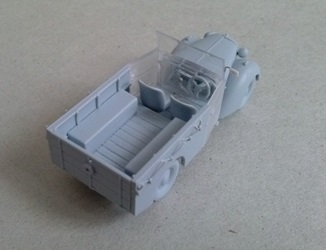 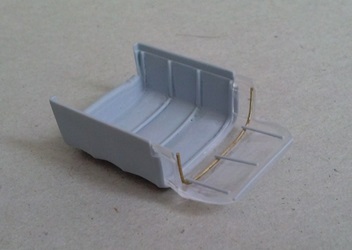
Conclusion
Chassis problem apart, in my opinion the kit is well
done and looks very nice. If placed on a base or when parked on the
shelf, the problem is barely visible. This vehicle series was used
only by the RAF and can’t be used otherwise. It will look very
well placed near a plane on an airfield background or on a dispersal
field. In 1944 the RAF followed the troops in France. I don’t
know if some Standard Tilly went there with the planes, but if so
that is another background to place it.
A particular thanks goes to Michael Shackleton of
the Tilly Register for its courtesy and the permission to use its
photos in this review.
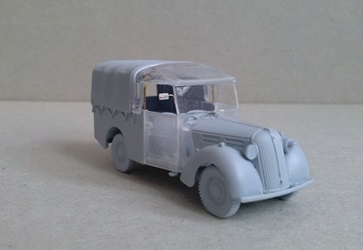 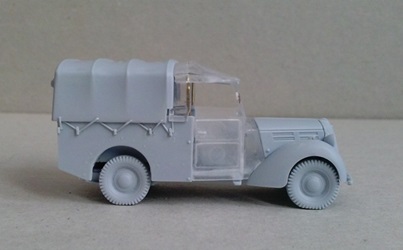 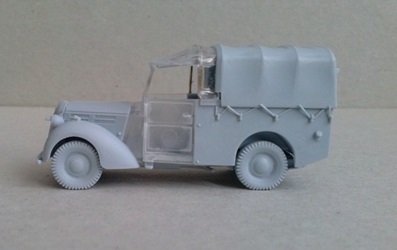
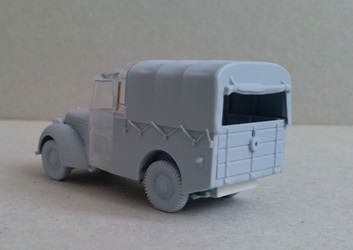 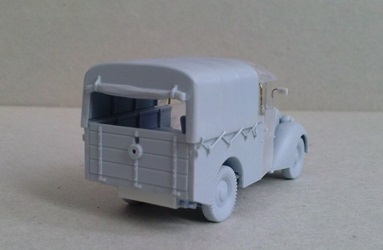
|